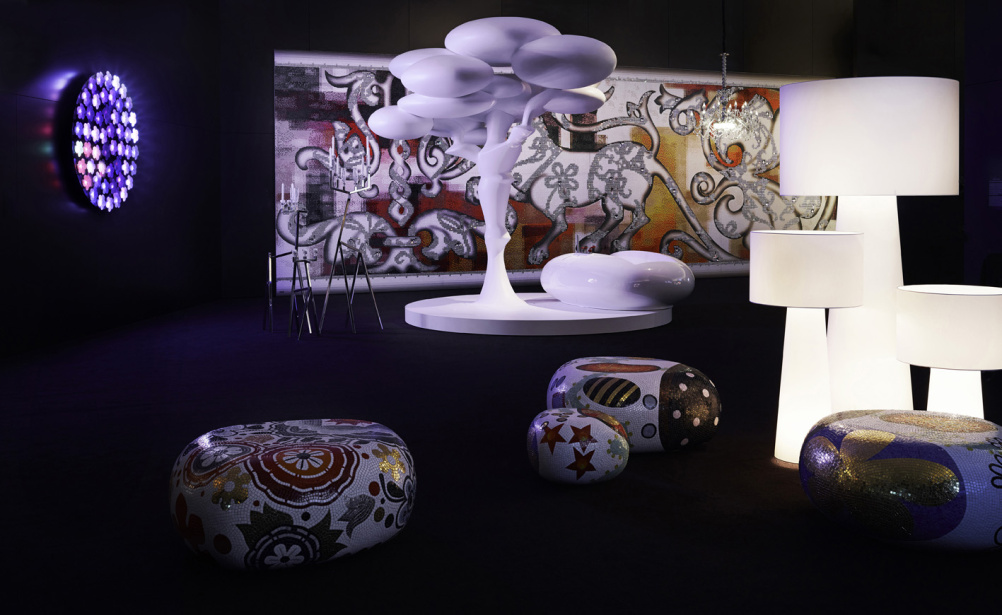Marcel Wanders Pinned Up
‘“Less is more” is a state of pathological delusion’, reads one of the large wall graphics at Marcel Wanders’ Amsterdam retrospective.

It’s a fitting reminder – as if we needed one – of Wanders’ raison d’etre, executed in a design oeuvre that eschews conventional ‘good taste’ in favour of the bizarre, bold and bonkers.
The exhibition, entitled Pinned Up: 25 Years of Design, feels more like a series of art installations than a design show, with the pieces arranged in a way to create immersive worlds, enveloping and surprising the viewer at every turn.

The exhibition title refers to the way the works are literally pinned up on display according to the gallery, as well as how Wanders, in showing his work from the last 25 years is ‘laid bare’, implying a sort of vulnerability.
However, there’s nothing vulnerable or unassuming about the pieces on show. They’re strange, loud and utterly engaging in each of the show’s three sections – the White Zone, the dark, theatrical Black Zone and the Art Direction Lounge, a slick furniture filled room dominated by a television screen displaying Wanders’ art direction show reel.

More than 400 objects are on show, including the Knotted Chair that gave Wanders his big break in 1996.
The piece highlights Wanders’ focus on sustainability and joyfulness, creating products, he says, that aim to ‘serve you for the rest of your life’.
He tells us, ‘I always thought design is a really positive thing – it adds beauty to the lives of people’.

Prior to the knotted chair, Wanders designed the rather minimal Set Up Shades in 1989, which went on to become the first designs in the collection from Droog, the Amsterdam-based conceptual design company founded in 1993.
Throughout the 1990s work on show, we see Wanders’ focus on narratives, looking to create pieces that tell a story, whether to the viewer or between separate elements of the pieces, such as the 1990 Couple vases.

This idea is extended into one of the sweetest series on show, the One Minute Sculptures from 2004. The works – as their title suggests – were all created in one minute, inspired by Wanders and his daughter playing with clay.
The works exemplify Wanders’ frequently childlike view of the world. As his pieces show, he delights in the human elements of design, placing joy and playfulness very much at the heart of what he does.

At times, however, this playfulness is married with the unnerving, as the sometimes haunting feel of the Black Zone of the exhibition proves.
Glamour is mixed with functionality, the sublime is mixed with the futuristic, disrupting the viewers’ sense of what’s real and what’s not, and the very idea of creating pieces that are fit for purpose.
Alongside the lights, videos and sounds of the Black Zone, a wall graphic reads, ‘being so rational, we have created a very simple version of ourselves’.
While there may be rationality to Wanders’ creations, there’s little that’s simple about Wanders and his work. And we can’t see that changing in his next 25 years of design any time soon.

Marcel Wanders: Pinned Up– 25 Years of Design runs until 15 June at The Stedelijk Museum Amsterdam, Museumplein 10, 1071 DJ Amsterdam, Netherlands. With thanks to www.holland.com
-
Post a comment




